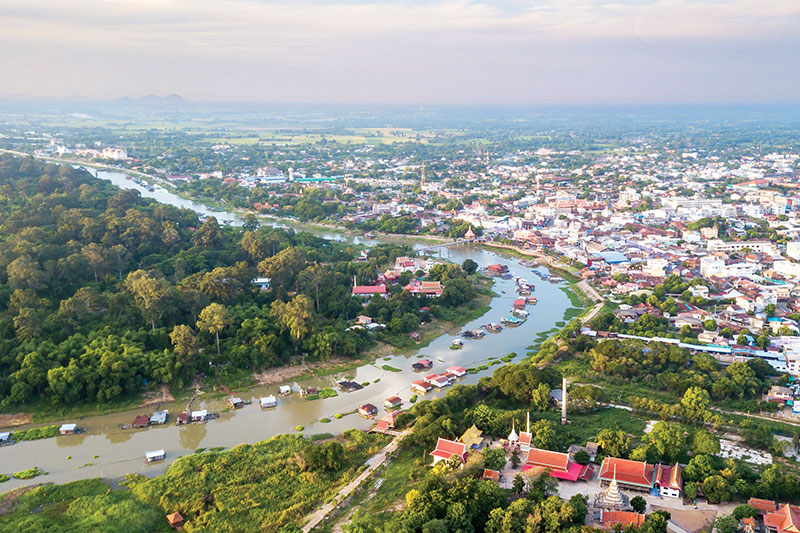
Uthai Thani: All Aboard Thailand’s Time Machine
Tranquil traditions and untouched wilderness on a journey through the kingdom’s past glories
Words: Phoowadon Duangmee
In the heart of Thailand, where the Sakae Krang River gracefully meanders, lies the tranquil province of Uthai Thani. As dawn paints the landscape gold, the countryside’s enchanting tale unfolds in age-old harmony. Long-tail boats glide by the iconic Wat Bot, a timeless beacon of Buddhist devotion. Across the river, a solitary monk drifts along in a small sampan, receiving morning alms from locals in a centuries-old tradition.
In Uthai Thani, just three hours north of bustling Bangkok, each moment invites a new discovery, from historic temples to serene waters.
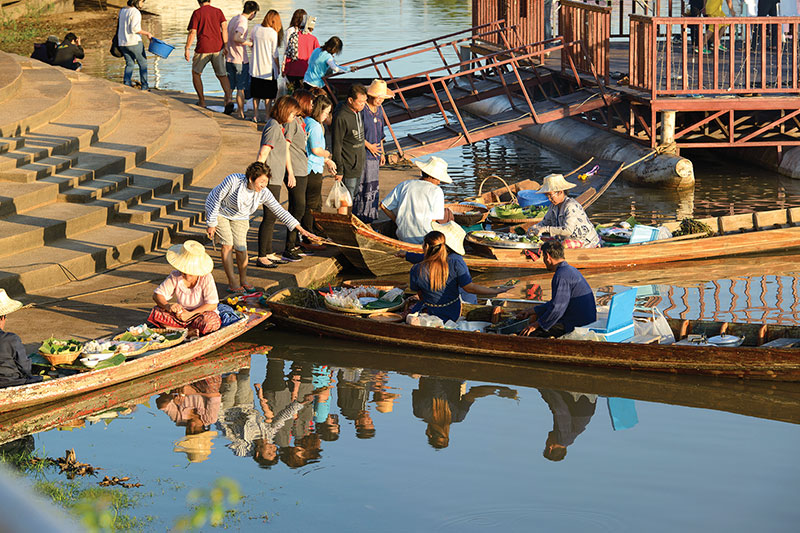
Begin your adventure at the bustling Sakae Krang Riverside Morning Market, the pulsating heart of the province. As dawn breaks, the market springs to life with vendors and eager shoppers converging on the riverbank for a riotous tapestry of sights, sounds, and smells. Immerse yourself in the fragrance of fresh produce and the sizzle of tantalising local delicacies, including the renowned “pla raed” fish. The market is also an opportunity to plunge into community life by taking part in the morning alms giving.
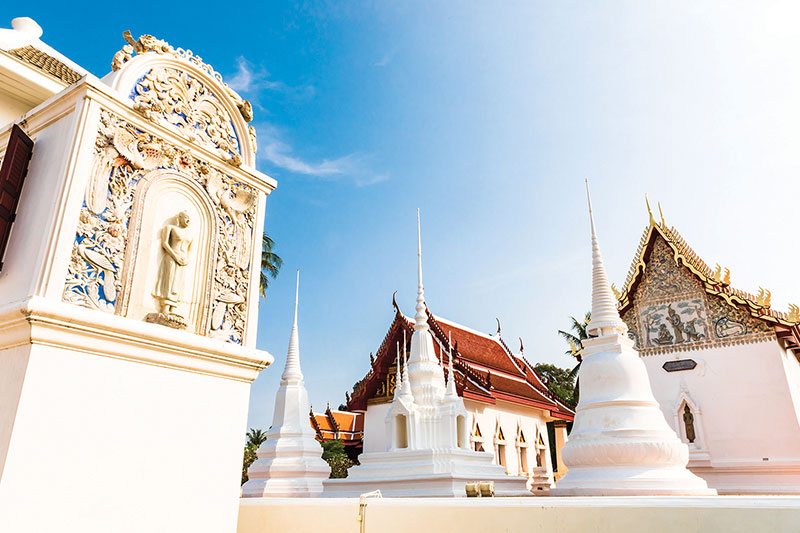
Next on your itinerary is the revered Wat Uposatharam, fondly known as Wat Bot. Steeped in history and spirituality, this sanctuary by the Sakae Krang River dates back three centuries to the early Rattanakosin Era (1782-1932). Traverse its sacred halls of mesmerising murals and ancient artefacts to reach the “Ubosot”, where you can bathe in the golden glow of the temple’s Buddha statue. This Sukhothai-era (1238-1438) treasure depicts the Buddha subduing the demon Mara, encouraging visitors to reflect on the journey to enlightenment.
More than just a scenic backdrop, the Sakae Krang River is a way of life for a unique community of boat dwellers whose existence is intricately tied to its ebb and flow. Comprising around 350 registered households, these residents rely on the river for their daily sustenance and livelihoods – from fishing to cultivating floating gardens. Their way of life has remained unchanged for centuries, offering visitors a fascinating window into a bygone era preserved along the riverbank.
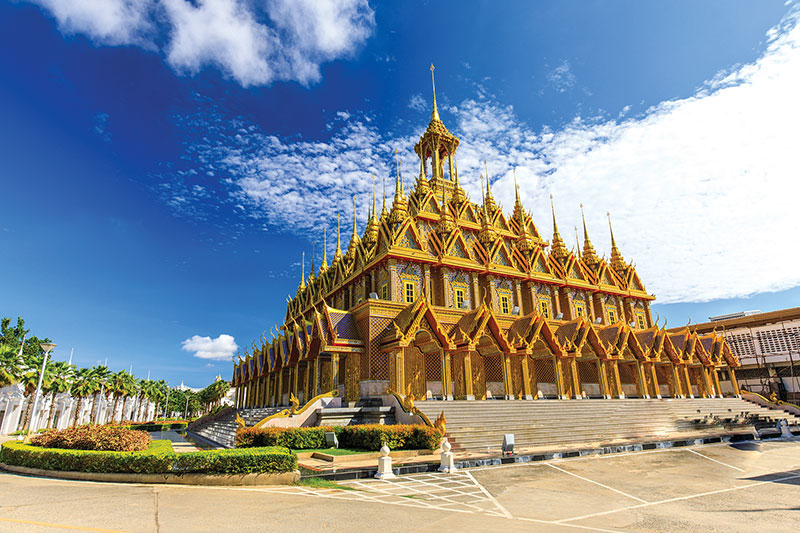
Closer to Uthai Thani’s downtown, Wat Chantharam, aka Wat Tha Sung, greets visitors with a storied past and architectural splendours. Dating back to the Ayutthaya era (1351-1767), this temple, lovingly crafted from tree trunks, has been restored to its former glory under the guidance of revered monk Luang Por Ruesi Ling Dam. Visitors discover treasures like the Crystal Sanctuary and the Golden Castle, serving as testaments to Thailand’s rich cultural heritage and religious legacy.
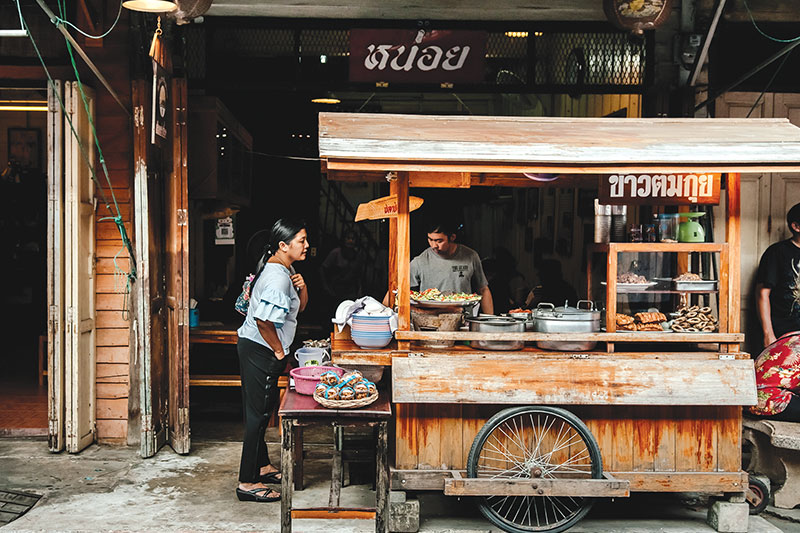
As the sun sets over Uthai city, ascend Sakae Krang Mountain and grab a box seat for nature’s jaw-dropping daily finale. As the blazing sky fades to charcoal, visitors can pay homage to the Lord Buddha’s footprint for the perfect end to their day’s exploration.
When hunger strikes, foodies make a beeline for Trok Rongya Alley, a buzzing temple to the delights of Thai street food culture. This narrow passageway once served as an enclave for Chinese residents and was home to opium dens. After the prohibition of opium in 1957, the alley fell into disrepair. Now, however, it has been resurrected as a vibrant pedestrian street in the heart of the city. Echoes of its stored past linger in the refurbished old wooden shophouses, now transformed into shops, restaurants, cafés, and souvenir stores. A standout among them is Jay Da Pla Luak, which offers traditional local delicacies like boiled or fried fish with spicy dip.
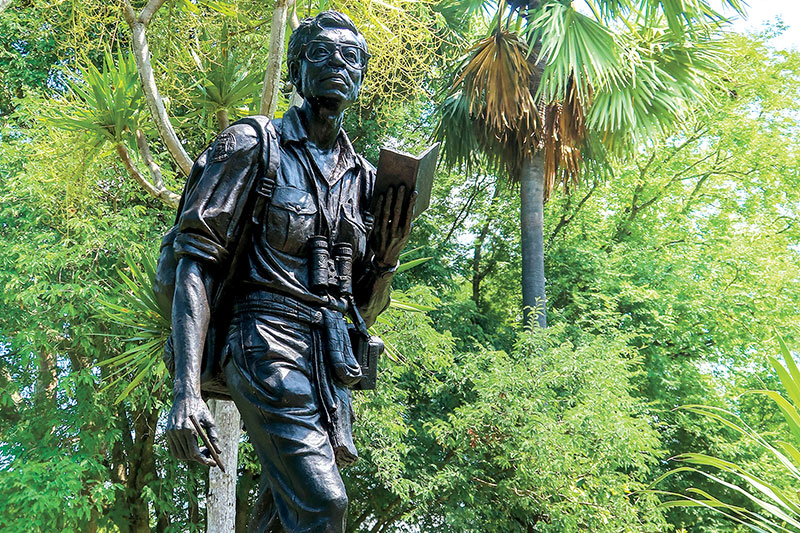
For nature lovers, the Huai Kha Khaeng Wildlife Sanctuary is just 100 kilometres from downtown Uthai Thani. Southeast Asia’s largest rainforest complex, the sanctuary gained UNESCO World Heritage Site status a year after famed conservationist Seub Nakhasathien took his life in 1990 to shed light on Thailand’s deforestation crisis. Immortalised as a national hero and a symbol of wildlife conservation, his legacy endures in the untouched natural surroundings of Huai Kha Khaeng.
Visitors can follow in Seub’s courageous footsteps by roughing it overnight in a tent at a sanctuary campsite, or opt to stay in a ranger cabin. With a labyrinth of trails to explore, outdoor enthusiasts can relish the crisp, pristine air as they traverse the forest, encountering animal tracks and a diverse mosaic of plant life. Lucky visitors may even stumble across tiger tracks, a thrilling reminder of the raw wilderness that engulfs them. The Pong Chang Puak nature trail is traversed by barking deer, wild boar, elephants, bantengs, and peacocks. Visitors can observe these creatures in their natural habitat from the observation tower at Thap Salao Creek.
Uthai Thani’s unique cultural landscape is shaped by diverse ethnic groups like the Lao Khrang, Lao Wiang, and Pathan. Located just 40 kilometres south of downtown, Ban Rai district beckons with its renowned handwoven Lao Krang fabric with exquisitely elegant “Sroi Sa” in vibrant hues from natural dyes. Visit Ban Rai on a Saturday and you can experience the Sao Hai Market, a haven for shoppers seeking organic produce and artisanal crafts. Carefully curated, this market offers a delightful variety of locally sourced goods at affordable prices, ensuring a rewarding shopping experience for visitors.
Whether gliding along the river at dawn, exploring ancient temples, or embarking on a wildlife adventure in the rainforest, Uthai Thani promises both unforgettable memories and a deeper understanding of Thailand’s rich cultural tapestry.
